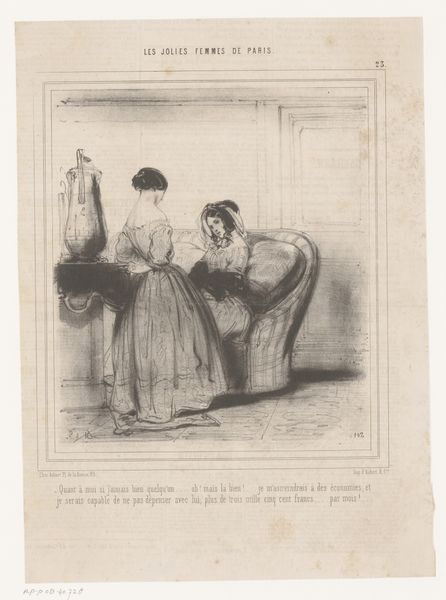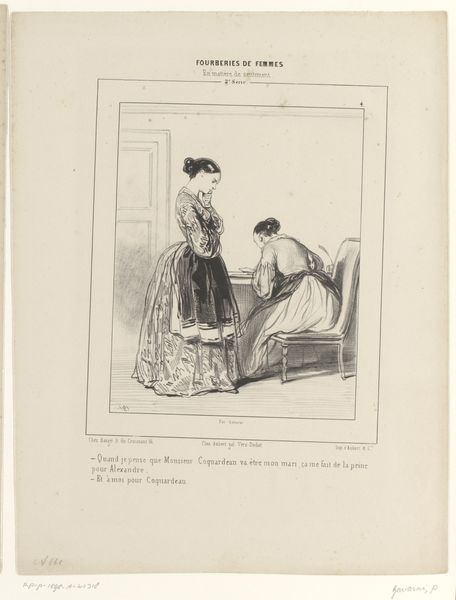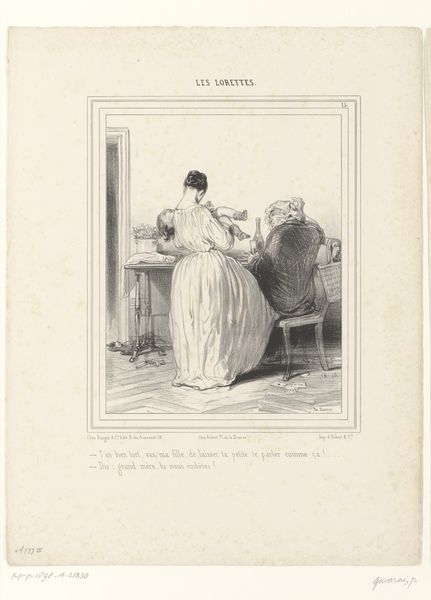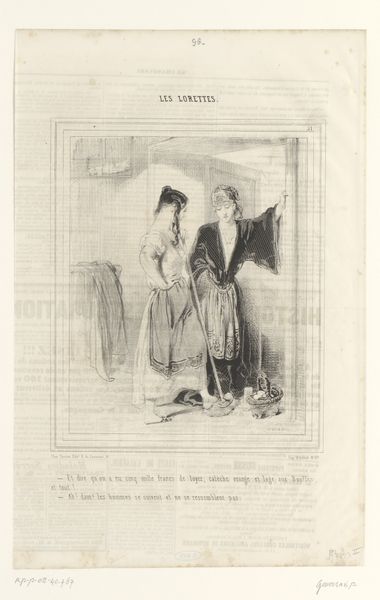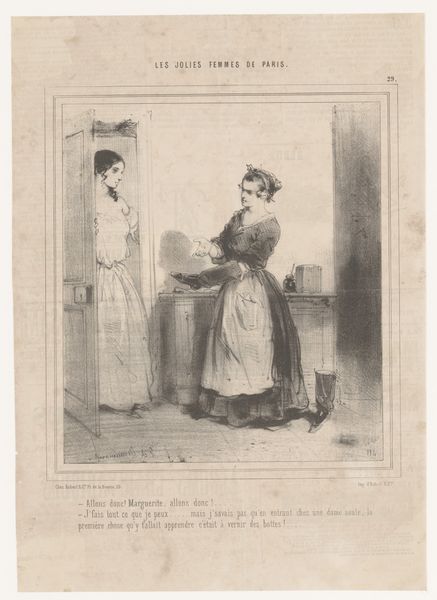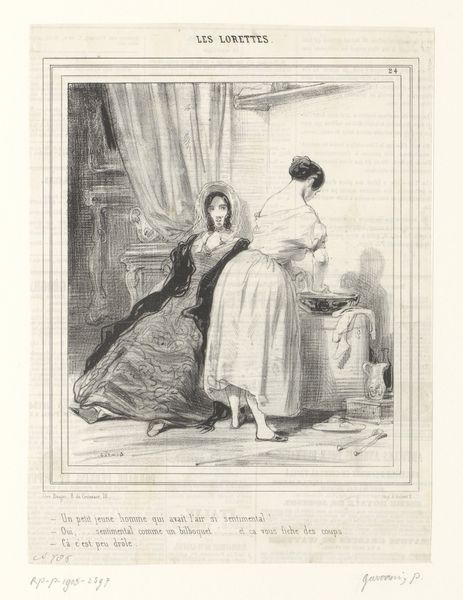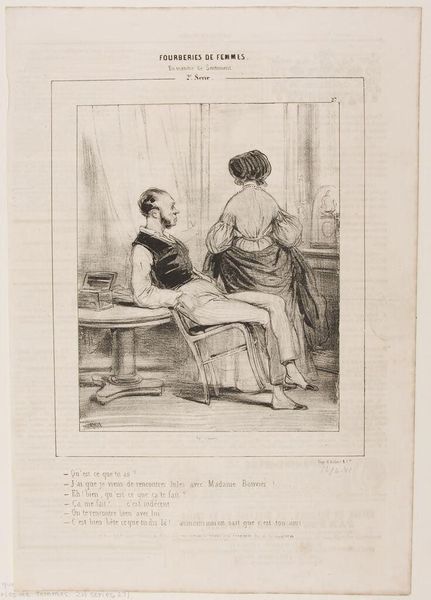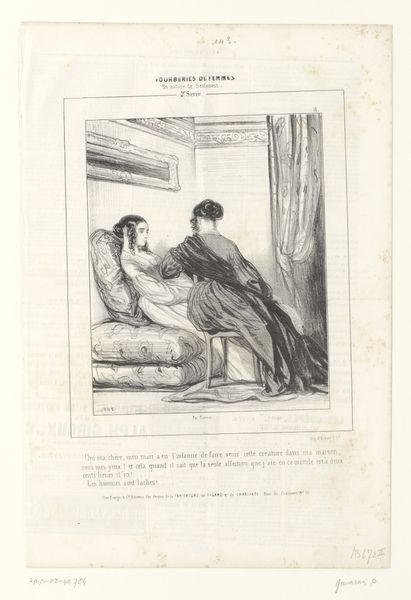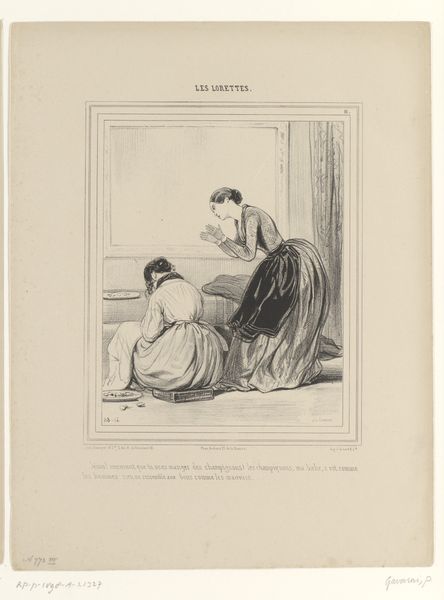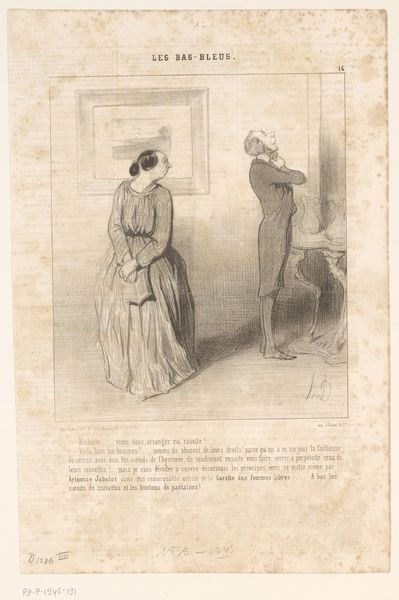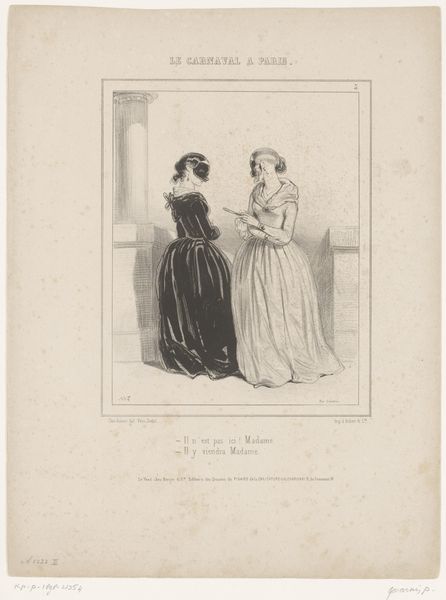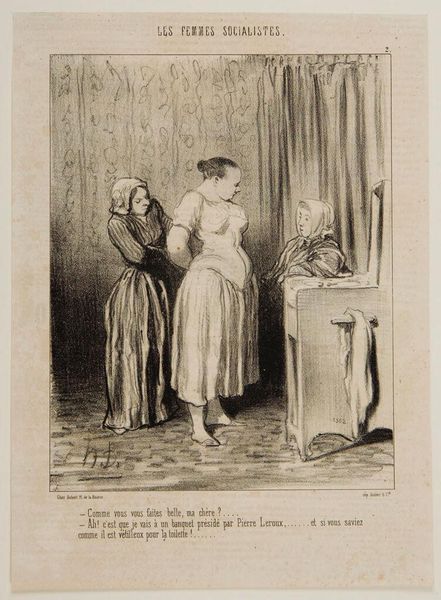
Les Jolies Femmes de Paris, 1848, No. 23, pl. 102 : Quant à mo (...) c. 1848
0:00
0:00
drawing, lithograph, print
#
portrait
#
drawing
#
lithograph
# print
#
old engraving style
#
19th century
#
genre-painting
Dimensions: height 340 mm, width 264 mm
Copyright: Rijks Museum: Open Domain
Curator: This lithograph, "Les Jolies Femmes de Paris," dating from approximately 1848, presents a glimpse into Parisian life, skillfully rendered through line and form. Editor: My first impression is of constrained opulence—the etching is spare, but it evokes a feeling of contained domestic drama. Curator: The artist’s handling of line is particularly compelling. Notice how the varied thickness and density of the marks delineate form and shadow. Semiotically, the graphic weight given to certain outlines inflects our reading of social class. Editor: Absolutely. The print is part of a series about Parisian women; its sharp satirical look at social mores reflects the upheaval of mid-19th-century French society after the July Revolution and the socio-economic realities influencing the roles of women. Curator: Considering the composition, observe how the positioning of the two figures generates a dynamic tension. One stands, poised, almost confronting; the other reclines, her posture indicating a possible ennui. The contrast in body language invites speculation about their relationship and situation. Editor: Indeed. I would even venture that the interior details, sparse as they are, imply financial discussion between the women; potentially about the role that women play within these conversations regarding marriage and status. Curator: Furthermore, the tonality created by the lithographic process grants a soft, almost melancholic atmosphere to the image. The way the artist utilized shading brings out details that emphasize both the character and emotionality of each figure portrayed. Editor: I'm intrigued by the artist's choice to highlight this seemingly minor, almost incidental, domestic encounter. It implies the importance of private dialogue and subtle expressions in shaping societal values within this historical context. Curator: Analyzing how the artist employed lithography reveals the ability to make affordable and replicable images, granting widespread access to views of Parisian society and playing a crucial role in constructing its collective understanding of beauty and worth. Editor: Seeing this print through your eyes allows me a broader perspective than just face value: a deeper understanding into not only its construction but its relevance and influence too! Curator: It enriches my understanding of the formal qualities inherent to the work itself: a study in balance, technique, and expressive capacity.
Comments
No comments
Be the first to comment and join the conversation on the ultimate creative platform.
